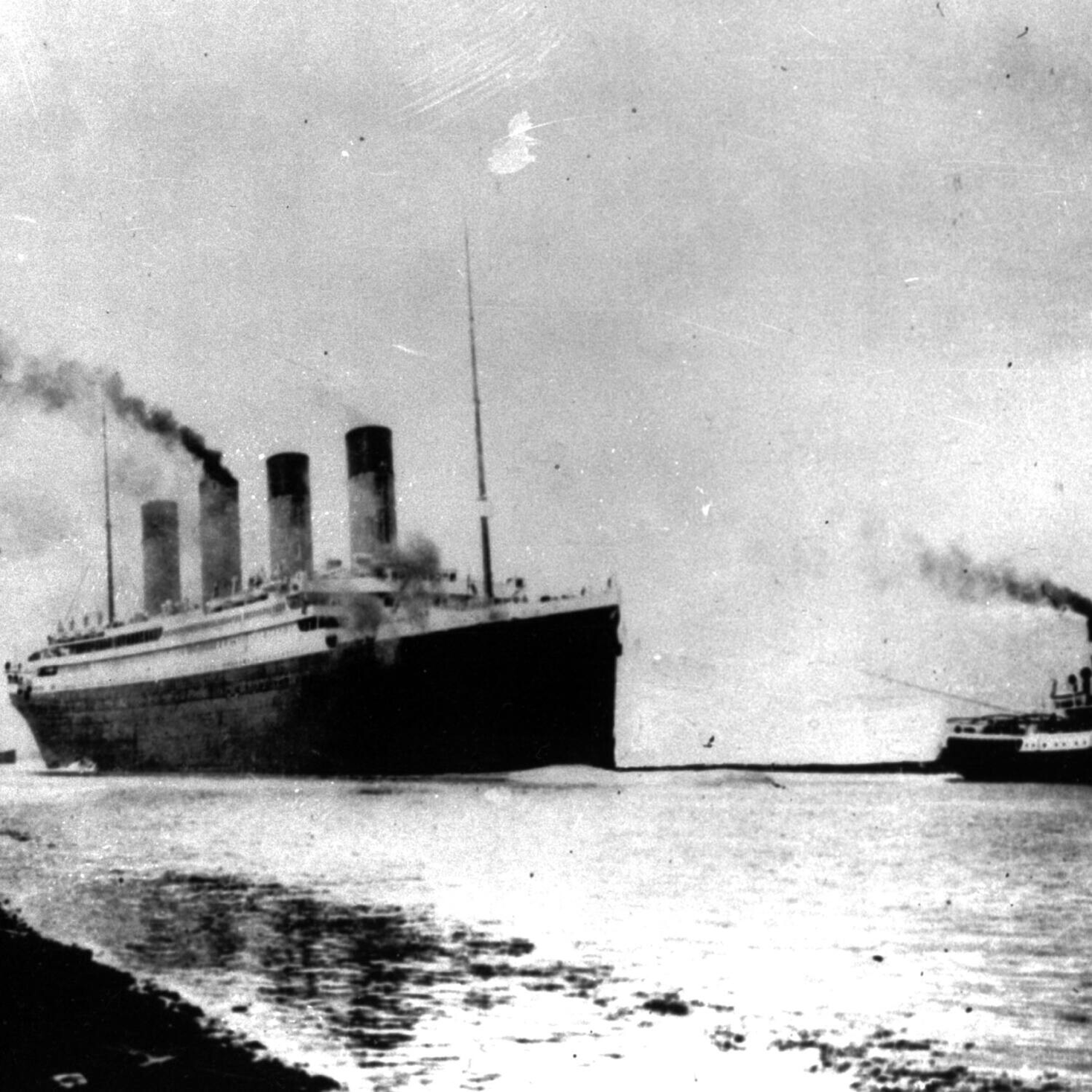The original version of this story was published April 12, 2012.
Ed Kamuda got the Titanic bug as a teenager in the 1950s, after seeing a Hollywood melodrama (“Titanic,” starring Barbara Stanwyck and Clifton Webb) in his father’s movie theater. He began writing to Titanic survivors, some of whom sent him artifacts from the doomed ship. In 1963, he founded the Titanic Enthusiasts of America.
Unfortunately, the Titanic stayed a niche enthusiasm in the ’60s. It was a time of war, protest and social upheaval, and few people were as fascinated as Kamuda with a disaster receding into the mists of time.
“Nobody seemed to be interested,” Kamuda says. “I wanted to throw in the towel.”
By 2012, Kamuda, 72, then the president of the renamed Titanic Historical Society of Indian Orchard, Mass., found himself besieged with interview requests as he tried to survive the Titanic centennial. It was a media event as huge and flamboyant as the great ship that lies in ragged ruin at the bottom of the Atlantic.
The Titanic story has defied the rules of history, brightening rather than fading with time. Most historical events turn into drab textbook subjects about which the main question is whether this will be on the test. Not the Titanic.More than a century after the ship hit an iceberg late on the night of April 14, 1912, and years after the death of the last Titanic survivor, the disaster feels as familiar as if it happened yesterday.
The serious Titanic buffs could find their way around the ship in the dark.
The centennial brought an eruption of books, articles, films, museum exhibits, memorial services, ocean cruises and the 3D version of the 1997 James Cameron movie that won an armload of Oscars. The Titanic has become a case study in what the folks in the faculty lounge would call mythogenesis.
To say that it is a mythic disaster does not mean that it was somehow imaginary. The real event was a supersize tragedy that took the lives of at least 1,500 people (the exact number is unclear) and featured dramatic elements that no fiction writer would be shameless enough to concoct.
This was the world’s largest ship taking its maiden voyage. The passengers represented a stratified society in miniature. At top were the first-class passengers, many of them famous millionaires, or aristocrats with names like Sir Cosmo Duff Gordon. Below were the second-class passengers, and then lower still the third class — distinctions that would have profound consequences in survival rates. (First-class men, though collectively glorified for letting steerage women and children go first in the lifeboats, actually survived at a higher rate than the third-class children.)
A lookout spotted the iceberg a little before 11:40 p.m. At the last moment, the ship swung to port, and the iceberg, looming some 100 feet above the water, ripped a gash along the starboard side below the water line, rupturing five watertight compartments.
The elite passengers felt something on impact — “a faint grinding jar,” as Walter Lord put it in his seminal book “A Night to Remember.” “It was not much, but enough to break the conversation and rattle the silver that was set for breakfast the next morning,” he wrote.
The nature of the injury to the vessel not only ensured that it would sink within hours but also that the people aboard would have time to respond in ways that have inspired countless retellings. There was a period of blithe reassurance. The ship, passengers could tell themselves, was unsinkable. Some played with the ice that had sprayed onto a deck from the passing berg.
You couldn’t make it up: Benjamin Guggenheim, staying on the ship, changes into formal evening attire because he wants to go to his death dressed liked a gentleman.
Incredible: The band played on.
“It’s a delimited area and time, there are a lot of human stories, and they involve choice,” said Stephen Cox, a literature professor at the University of California at San Diego and author of “The Titanic Story: Hard Choices, Dangerous Decisions.” He compares the two hours and 40 minutes between impact with the iceberg and the sinking at 2:20 a.m. April 15 to the length of a play.
“I don’t think a myth can develop unless you have a choice that could be very unfortunate or tragic,” he said.
For another survey of the mythologizing of the Titanic, one turns to Steven Biel’s “Down With the Old Canoe: A Cultural History of the Titanic Disaster.” Biel is not interested in what happened so much as how people reacted to what happened, then and now. The disaster “produced a contest over meaning,” Biel writes.
Early accounts of the disaster emphasized the supposed heroism of the first-class men who followed a “women and children first” protocol. For some commentators of the era, this offered a rebuke to the women’s suffrage movement. As Biel documents, the Titanic infiltrated all manner of political and cultural issues, including imperialism, modernity, labor unions, class privilege, immigration and alleged Anglo-Saxon superiority.
Biel laments that modern discussion about the Titanic has become rather more one-dimensional, a tale of technological hubris. Cameron in a National Geographic Channel special drew a connection between the “unsinkable” Titanic and our fossil-fuel-burning civilization entering an era of climate change.
The mythologizing began almost as soon as the news broke that the great ship had hit an iceberg and gone to the bottom. The New York City newspapers threw armies of reporters into the disaster coverage, and soon readers were told who had been heroic and who had been villainous.
In the decades thereafter, the occasional memoir or magazine article boosted interest in the story, but it wasn’t until the 1950s — when Ed Kamuda was a lad — that the Titanic disaster began overpowering the usual currents of forgetfulness. First came the Stanwyck/Webb movie, then the Lord book, which also inspired a live TV drama, replete with flooded stage.
Another powerful surge in interest came in 1985, when Robert Ballard and colleagues found the ship, bow and stern split apart, on the sea floor more than 12,000 feet below the surface. That incited an ongoing controversy over salvaging operations, with Ballard, for one, arguing that the wreck should be left alone.
The Titanic then reached a new level of cultural resonance with the Cameron movie, a love story and feminist parable in which heartthrob Jack Dawson (Leonardo DiCaprio) liberates Rose DeWitt Bukater (Kate Winslet) from a suffocating future in the patriarchal aristocracy.
A famous headline in the Onion’s 1999 book reviewing the 20th century — “World’s Largest Metaphor Runs Into Iceberg” — captured in a phrase the way the Titanic has ceased to be merely a maritime accident. It has replicated itself to the point that the real event seems increasingly swamped by the accounts of the event, and accounts of the accounts of the event.
Ed and Karen Kamuda point out that there are people who have gone to the graveyard in Halifax where Titanic victims are buried and have taken rubbings of the grave of a crewman named Dawson. That’s because it’s the name of the fictitious DiCaprio character.
The Titanic offers lessons not only in maritime safety and crisis management but in sustainable mythologizing. Events can defy the normal historical fading if they can speak to succeeding generations and become part of a common vocabulary. The internet helps: Buffs can congregate more easily than in the old days.
Commercial interests have their say. Disasters are marketable. The Titanic lends itself to visual media. No one’s going to make a movie about the Treaty of Ghent. (It ended the War of 1812, the bicentennial of which didn’t seem to inspire the same tremendous upwelling of media interest.)
At some point, the historical event inspires a self-sustaining body of literature, nurtured by amateur historians. There’s always another angle to explore. The Kennedy assassination is like this, as is, on a grander scale, the Civil War. New books about Lincoln have become as ubiquitous as ground squirrels.
These topics are bottomless. If you get so deep you hit mud, you need to find out what’s below the mudline.
“I see all the stuff coming out today. I don’t have time to read all of it,” said Ed Kamuda.
Even a buff — even the original Titanic enthusiast — has his limits.
Ed Kamuda died in 2014, two years after this story was first published.
Joel Achenbach covers science and politics for the National desk. He has been a staff writer for The Post since 1990.




